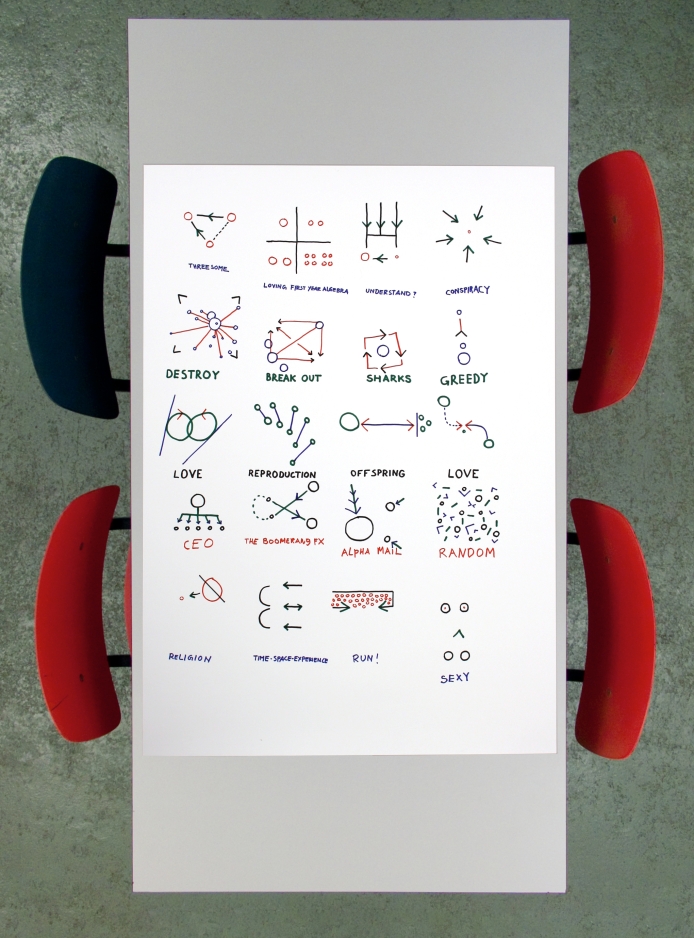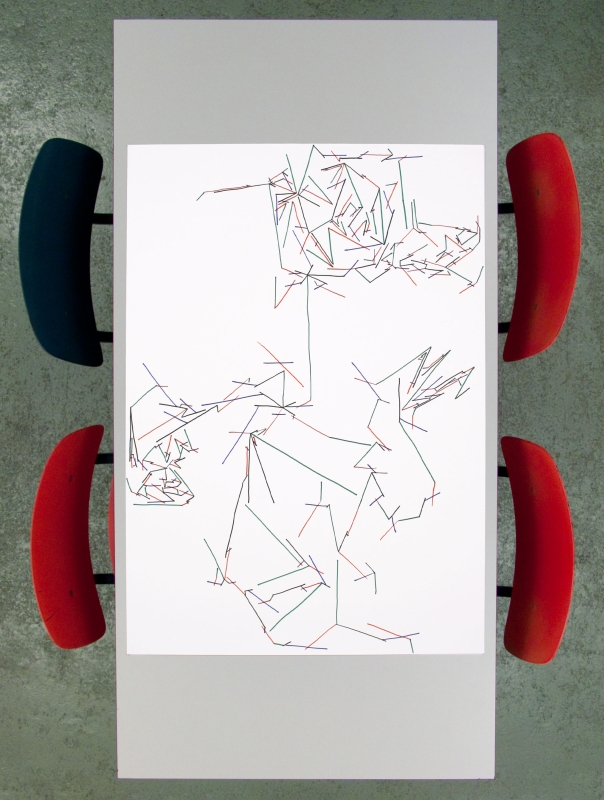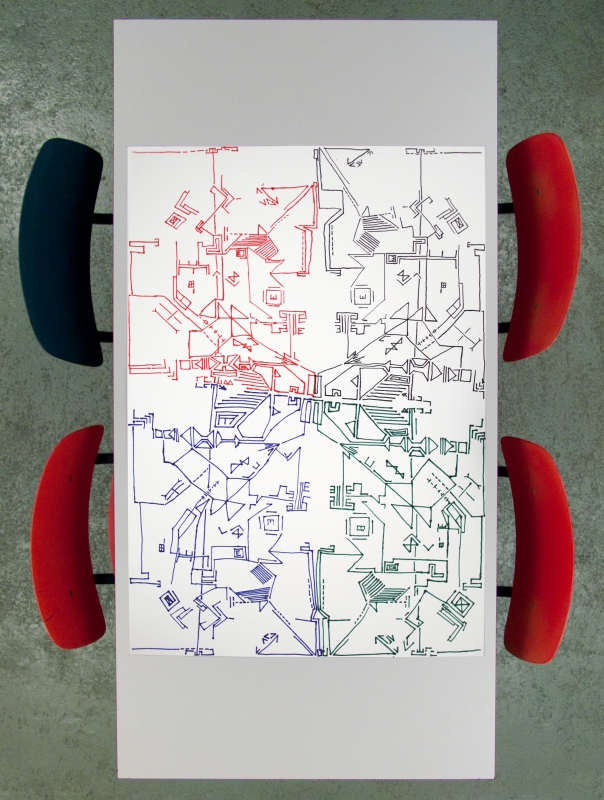Relationships first round
Relationships second round
The sheet is divided into a grid of 4 columns.
- 1. Each player is assigned an element in the list: circles, lines, arrows, titles
- 2. Player one starts in the first column, player two in the second etc.
- 3. All players draw at the same time in their assigned column. The players are requested to create as much meaning as possible using their elements, in the knowleddge that the others will finish it off later.
- 4. When all players are done drawing, the players moves one column to the right and repeat the previous step.
- 5. After four rounds of drawing, each player is assigned a new element and the players start drawing in a fresh row.
- 6. Repeat until the paper is full.
Luna: The goal was to create as many hatched areas as possible. It was very difficult to formulate the precise rules although I had it very clear in my head.
Initial setup
- Play with four players.
- Each player as a colored pen: red, green, blue and black.
- Each player places a dot on the sheet at an arbitrary position but not further than 10 cm from each other.
- The players take turns:
Task to be performed every turn by each player
Draw a straight line
- The line must connect two dots.
- The angle of the line must be within the following range: 0 to 45 degrees for the black lines, 45 to 90 degrees for the blue lines, 90 to 135 degrees for the red lines, 135 to 180 degrees for the green lines.
- Connect the line to an existing line if possible.
- Draw the shortest possible line from your starting point. If you enclose an area (a plane surrounded by lines) then hatch it with lines parallel to the line you enclosed the area with. The enclosed area may not contain unconnected dots or open ended lines.
Place a dot
The position of the dot is not further away than 10 cm from other dots and not inside the convex hull of all dots.
Edo:
I really like this idea that you can set up a bunch of fairly simple rules and when you execute those simple rules you create something much more complex: emergent patterns that are not at all inferable from the original rules.
With this workshop we made custom rules for each other: very formal instructions on how to draw lines. We made these rules using templates, printed on cards, from which we could create our own custom rules.
For example: "The start of your green line must be at a tip of the last drawn red line."
For example: "The start of your green line must be at a tip of the last drawn red line."
We could do this workshop multiple times, create other custom rules every time, and thus have very different results every time. The result of this evenings session is just one of many.
This workshop is based on a previous one we did.The goal of Kaleidoscope is to mirror synchronously the drawing of the leader.
Setup
- Each player has one color pen.
- The paper is divided into 4 imaginary segments, in which a player operates.
- Each turn a player is either leader or follower.
- The players decide which person may be the leader first.
Play
- Clockwise in turns a player is the leader, for approx. 30 sec. The other 3 people are the followers.
- The leader draws freely in his segment using only straight lines.
- The followers must mirror the drawing of the leader, synchronously while he/she is drawing.
End
The ending of the game is decided by the player who proposed to play it.




